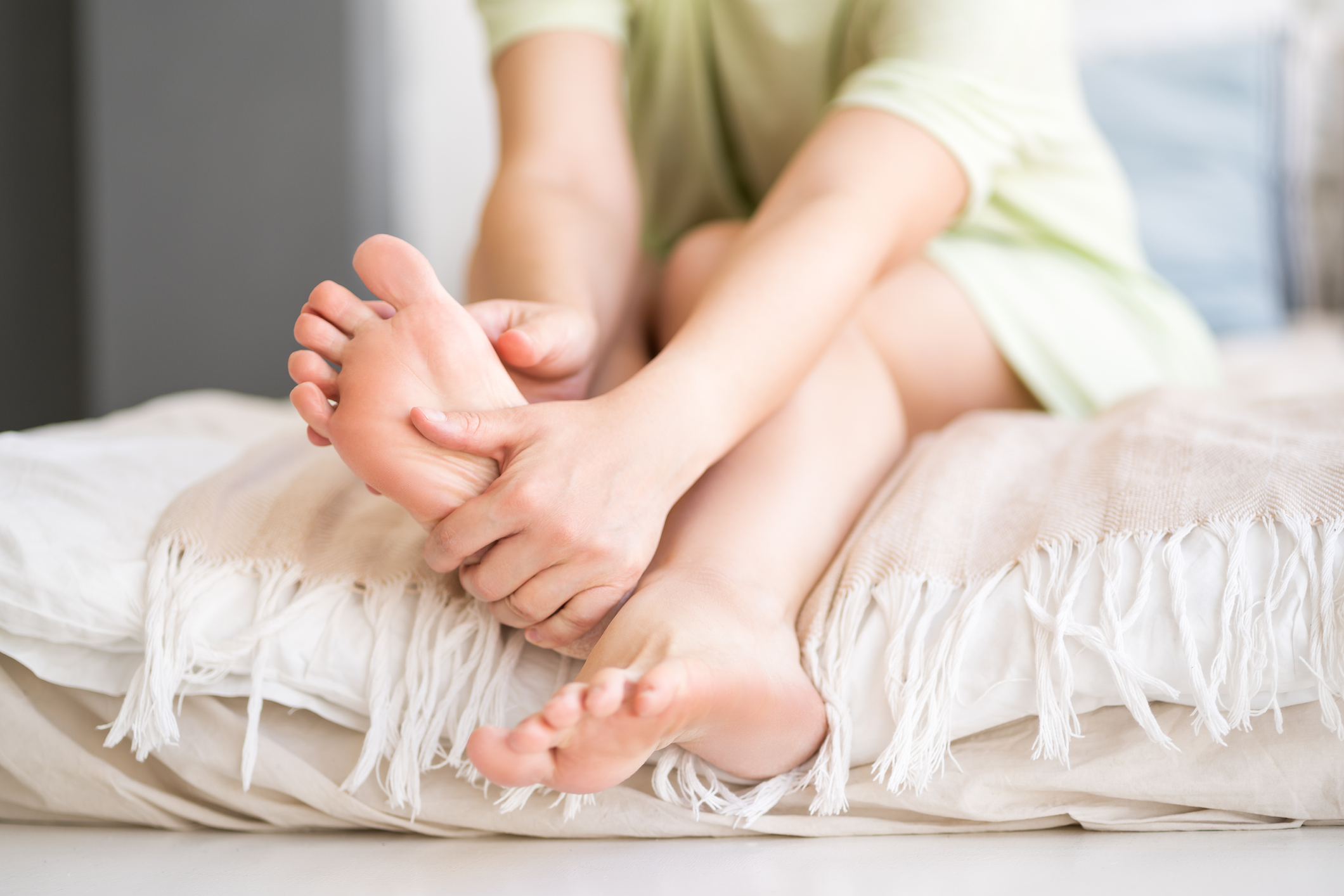

It looks like the worst of the pandemic is behind us, but the most mysterious symptom of the virus — “COVID toes” — still has experts scratching their heads.
In the earliest months of the pandemic, doctors began to note that patients often suffered from purple, red, swollen toes. Some even experienced blistering on their toes and extreme pain.
“At its most mild, people complain of it being like a mild itch,” says Esther Freeman, a dermatologist and epidemiologist at Harvard Medical School. “At its most severe, it’s so painful that some patients can’t put their shoes on for a couple of weeks.”
The condition became so common that some physicians, who once saw only one to two patients per year with these types of symptoms (also known as chilblains) were suddenly seeing dozens in a month.
And experts were mystified…
While many viruses can cause rashes and other areas of the body, chilblains due to an infection has always been considered rare, so much so that Freeman says, “If you had asked, say, 100 dermatologists before the pandemic what rashes would you expect to see with a virus, pernio chilblains would not have made the list — it would not have made the top 50.”
So what really is behind the phenomenon of COVID toes?
What the experts are finding as they learn more
You may find this hard to believe, but a debate has arisen as to whether a COVID infection is even the cause of these discolored, painful toes.
That’s because numerous patients who presented with the swollen digits never developed other symptoms of COVID — and many even tested negative using a PCR test.
In fact, research out of Northern California showed that just 17 of 456 patients suffering from COVID toes tested positive for the virus via PCR. And only a single person out of a sampling of 97 tested positive for COVID antibodies.
Yet, a landmark study published in the British Journal of Dermatology, which analyzed the blood and skin samples of 50 patients who tested negative on PCR — yet suffered from chilblain — made two important findings that may explain it all:
- Compared to healthy patients, those suffering from COVID toes also showed high levels of autoantibodies (immune proteins in the blood that attack the body’s own tissues)
- COVID toes patients also had elevated levels of proteins, known as type I interferons, which serve as the first line of defense against viral infections
According to COVID experts, this suggests that an overly aggressive immune response to the virus is likely behind the symptoms.
“The way I explained it to my patients is COVID toes are almost too much of a good thing,” Freeman says. “Your body did a pretty good job of fighting off the virus, and in fact it had a pretty appropriate immune response in that there was a lot of this interferon around. And a side effect of having all this interferon around is that your toes turn purple.”
These same high levels of interferon production could be why so many patients test negative to the virus, since scientists say the interferon helps clear the infection prior to antibodies forming.
The inflammation connection
Interestingly enough, the interferons which could be behind COVID toes are also potent contributors to the inflammatory cytokines we have heard so much about when it comes to the virus’s respiratory symptoms.
Like the interferons, cytokines are molecules that set off an inflammatory response to combat infection. But with the COVID virus, both of these mechanisms, faced with a virus they hadn’t seen before, went a little overboard. With COVID toes the results were less harmful than what we saw with a “cytokine storm,” — almost like two extremes of an immune system’s hard-fought battle.
This offers valuable insight into how to fight off these symptoms — by supporting healthy inflammatory levels and immune response.
There are a few ways we can do that…
First, research has suggested the anti-inflammatory effects of omega-3 fatty acids — specifically the long-chain acids eicosapentaenoic acid (EPA) and docosahexaenoic acid (DHA) — may prove beneficial to COVID-19 patients.
Second, a team from Purdue University and the National Institutes of Health, which analyzed individual lung cells from eight people with COVID-19, found that Vitamin D helps to speed up the transition from pro-inflammatory to the anti-inflammatory phase of the body’s immune cells.
Finally, research that began at the height of the pandemic found that patients taking a combination of honey and Nigella sativa (or black cumin seed) showed full viral clearance and got over their symptoms quicker than those taking a placebo. A big plus too is that black cumin seed has an active ingredient that has immune system modulating properties.
That’s helpful because an under-active response leaves you open to infection, while an over-active immune system can’t tell the difference between your own body’s systems and invaders. This is the main reason my family and I began using Peak Golden OilTM, and haven’t stopped since COVID first crept into our vocabulary.
Black cumin, which produces a golden oil made from cold-pressed seeds, is one of the best-researched natural health remedies around the world. It’s been the subject of at least 458 published, peer-reviewed studies thanks to its benefits, including its ability to mediate inflammation levels.
So, while the mystery of COVID toes continues, we’ve learned some valuable lessons: A healthy immune response is a balanced response, and keeping our inflammation tamped down when we are well may help keep it from going haywire when we’re sick.
Sources:
Mysterious wave of COVID toes still has scientists stumped – National Geographic
The regulation of inflammation by interferons and their STATs – NIH